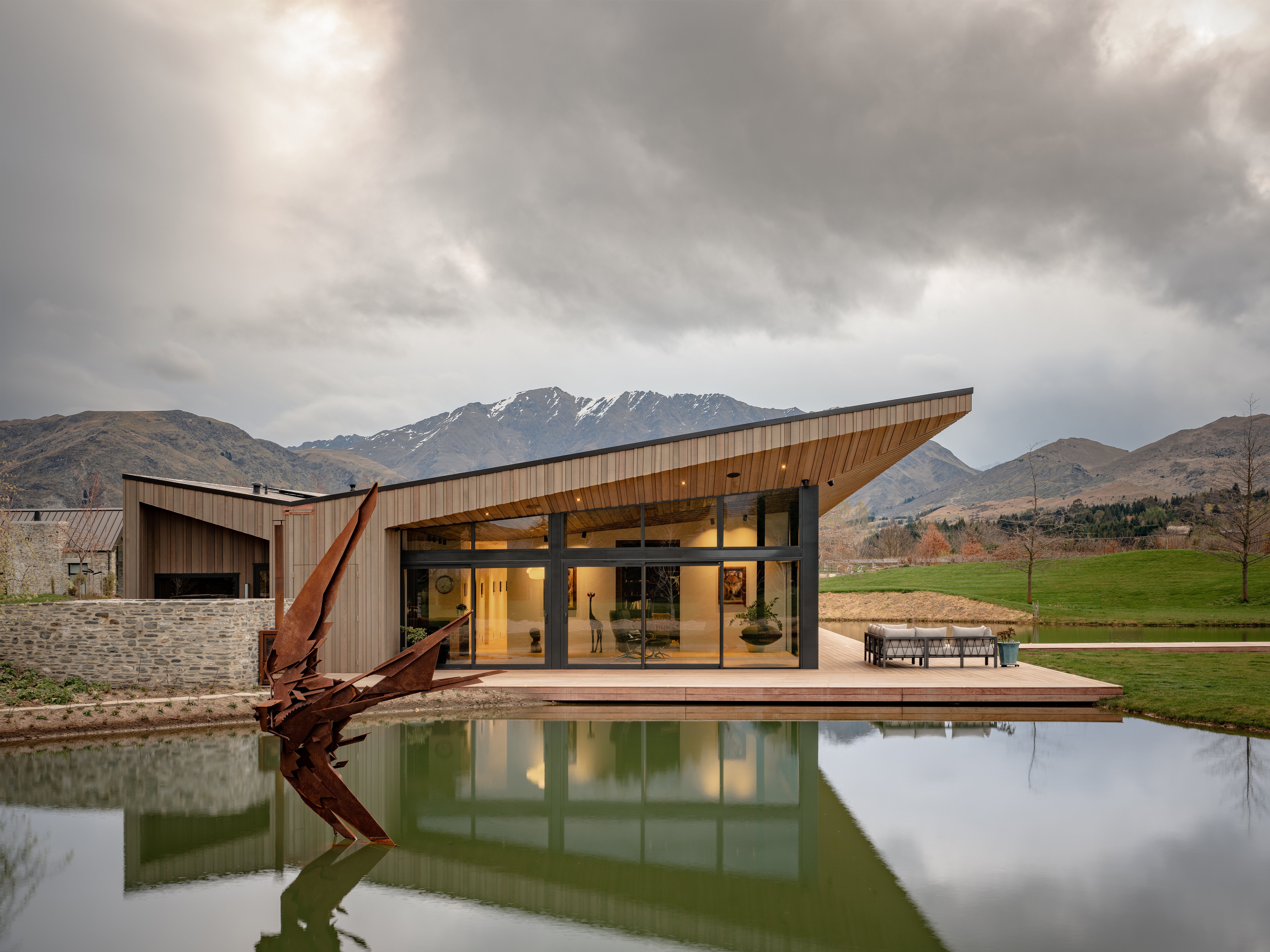Every room in this house has a mountain view and opens on to water. Kim Dungey reports.
Nestled near Queenstown, this cedar-clad home is a shining example of how architecture can respond to its surroundings.
Its most striking element is a twisted butterfly roof which mirrors the undulating peaks and troughs of the surrounding mountains.
"Wings Over Water" was designed by Kamermans Architects, which was also responsible for the owners’ previous house in Auckland.
Project architect Marina Leenman said the couple wanted a sustainable, four-bedroom home with a sauna, a library and open-plan living areas. The house needed to be spectacular and a connection to the land was key.

As part of the resource consent, the owners had to provide screening from the neighbours, so one of the first jobs was designing mounds around the perimeter and planting over 100 trees. In an unusual move, the two large ponds were created after the house had been designed but before it was built.
The size of the plot gave the architects freedom to place the house in the ultimate location in terms of orientation and capturing the views, she said.
"We even had a very large map and ... kind of choreographed the building around the peaks."
From the front door, there’s a direct line of sight through to the conservatory, towards Coronet Peak. Meanwhile, Cardrona and the Crown Range are visible from the kitchen, dining and living areas.

In the open-plan kitchen, dining and living area, the ceilings are at their highest, while in the bedroom wing, they drop down to create a more intimate atmosphere.
The butterfly roof not only emphasises the drama of the surrounding landscape. It houses solar panels and its central gutter channels rainwater into in-ground tanks for reuse.
Natural materials and colours connect the home to its surroundings. Textured timber floors blend seamlessly with the wooden deck, schist garden walls help ground the building in the landscape, and cedar weatherboards of alternating depths and thicknesses create a rippled effect that mimics the shadows created by the nearby trees.
The cedar cladding folds up the angled soffits, which line up perfectly with ceilings on the interior — a feature that Leenman said would have been "insanely difficult" for builders Shore Construction to achieve.
"There aren’t many right angles in the roof and wall design."

The size and angle of the eaves were designed to allow the low winter sun deep into the interior and to prevent overheating in summer.
The central conservatory, with its glass roof and tiled floor, serves as a winter heat sink. In the colder months, it produces passive heating for the whole house, while in summer it can be opened up to the outdoors to become a breezy courtyard.
The end result is a sculptural building that is also sustainable.

















